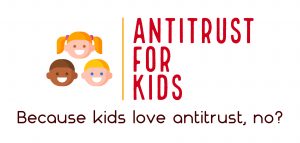Author: Molly Donovan
You may remember Gordon—in many ways, he was dominant in the 5th grade, and though his behavior was questionable at times, he was very popular.
I’m writing this story because Gordon is starting a new school year and has ascended to MIDDLE SCHOOL. Very cool, but very intimidating—even for Gordon. For one thing, there is an entirely new set of rules about how students are supposed to behave.
In elementary school, there are rules, of course, but they’re intuitive (no pushing, no yelling, please share) and all kids are encouraged to form friendships with all other kids. You can walk to lunch with any other kid you choose to. You can play at recess with any group of kids you want to. This made things easy for Gordon who was a natural at buddying-up with classmates and forming new relationships with ease.
In middle school, things aren’t the same—there’s actually a rule against the buddy system that feels contrary to everything Gordon previously knew. Basically, the rule is: you cannot run around in friendship packs—or duos even—unless they are teacher approved. Why? The principal says the school is trying to eliminate friend groups that are probably going to cause trouble—by, for example, ganging up against the weaker kids who aren’t popular and don’t like gym, or getting too powerful on the playground and pestering the younger kids. The rule is not against combinations that will cause trouble, only that probably will.
You’re likely wondering how it will be determined whether a particular friend group meets that standard. Good question. Apparently, the test is not whether the parents and students —experts on who’s who in the ever-changing social dynamics of middle schools—believe a certain combination spells trouble. The principal and teachers will decide based on dusty old textbooks with opinions written years and years ago (we’re talking 1970s) about tween society.
Query whether that’s the best way. But that’s the way the teachers want to do things.
Did it work out? The school year just started, so it’s too soon to tell and the rules are in purgatory—they’re being publicly tested but are not official yet.
Bottom Line: This summer the FTC and DOJ Antitrust Division issued their draft Merger Guidelines. The Guidelines explain how the agencies will evaluate proposed mergers and interestingly, they rely heavily on decades-old caselaw rather than current economic thinking. And as we previously explained, compared to prior Guidelines, the draft Guidelines are more hostile toward mergers, returning (for example) to lower thresholds for determining when markets are “highly concentrated” or the transaction will significantly increase concentration.
My colleagues’ posts analyzing the caselaw that underlies the draft Guidelines can be found here, here and here.
So, the lesson is: whether you’re a middle-grader like Gordon or a company considering a merger or acquisition, it’s fair to expect more challenges to your contemplated relationships going forward.
 The Antitrust Attorney Blog
The Antitrust Attorney Blog



